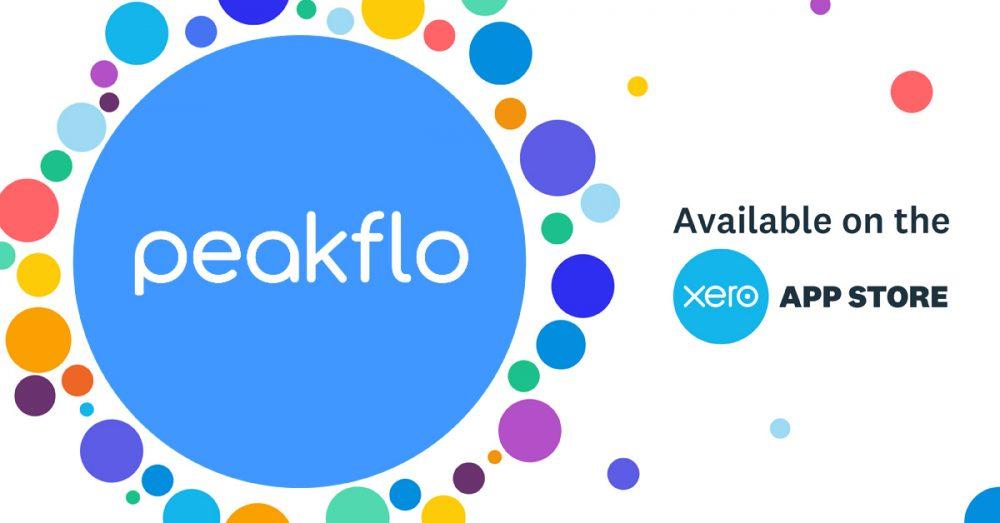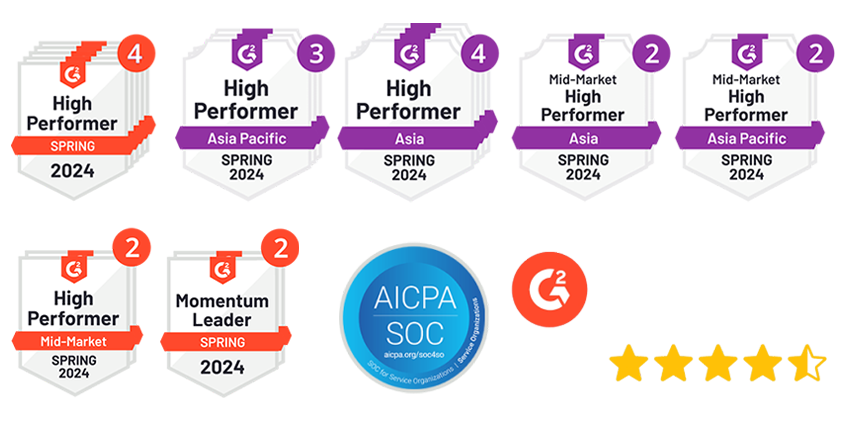Customer service inquiries keep piling up, and traditional chatbots can’t handle the complexity. According to recent data, 97% of executives feel an urgency to integrate AI tools into their operations, with conversational AI becoming essential across industries. But what exactly makes this technology so critical for modern businesses?
Conversational artificial intelligence refers to technology that enables software to understand and respond to human conversations naturally, whether through text or voice. Traditional chatbots were limited to rule-based responses and struggled with complex queries, but today’s conversational AI can recognize various speech inputs, mimic human interactions, and respond to queries in multiple languages. These systems use machine learning and natural language processing to continuously improve their understanding and responses.
The business case for conversational AI becomes clear when you consider that 51% of consumers actually prefer interacting with bots when they want immediate service. This technology helps businesses build stronger customer relationships through natural, human-like dialogue that can answer questions, solve problems, and increase efficiency around the clock. Understanding conversational AI has become essential for any business looking to stay competitive in 2025 and beyond.
What is Conversational AI?
Image Source: Spot Intelligence
Behind every smart virtual assistant lies a powerful technology designed to make digital interactions feel more human. Conversational AI is a technology that enables computers to understand, process, and respond to human language in a way that mimics natural dialogue. This technology goes far beyond simple text exchanges to create meaningful, context-aware interactions.
Conversational AI definition in simple terms
Conversational AI combines several technologies to simulate human-like conversations. It uses natural language processing (NLP) to parse text or speech, natural language understanding (NLU) to decipher meaning and intent, and natural language generation (NLG) to formulate responses. These systems don’t just follow scripts—they analyze patterns in vast amounts of data to understand how humans communicate.
What makes conversational AI truly powerful is its ability to:
- Recognize various speech and text inputs
- Mimic human interactions across multiple languages
- Learn and adapt from every interaction
- Understand context, intent, and even sentiment
The purpose isn’t just automation—it’s about reproducing the experience of nuanced, contextually aware communication that feels natural and intuitive.
How it differs from traditional chatbots
Traditional chatbots and conversational AI are often confused, yet the distinction is significant. Basic chatbots operate on predefined rules and limited scripts to handle straightforward tasks like answering FAQs, while conversational AI represents a major evolution in capability.
Conversational AI differs from rule-based systems in several key ways:
- Understands the intention behind messages, even when phrased unexpectedly
- Processes natural language rather than just matching keywords
- Maintains context across multiple exchanges
- Learns continuously from interactions to improve responses
Here’s a clear example of this difference: if you asked a traditional chatbot, “Where’s my package?” it would need those exact words to trigger the right response. Conversational AI, meanwhile, can understand the same question phrased dozens of different ways, even something vague like “I’m wondering about my order status”.
Why it matters in 2025
The business landscape of 2025 shows conversational AI becoming increasingly central to strategy. A striking 97% of executives report feeling an urgency to integrate AI tools, with conversational AI specifically predicted to generate $57 billion in global revenue over the next three years.
This rapid adoption stems from several factors. Customer expectations have evolved—51% of consumers have interacted with advanced voice AI, and 67% approve of AI in customer experience. The technology has reached a maturity point where it can analyze sentiment, infer context, and offer proactive solutions.
Conversational AI has expanded beyond simple customer service into reshaping how decisions are made, problems are solved, and value is created across industries. From finance to healthcare, retail to transportation, businesses are finding that conversational AI doesn’t just handle queries—it builds relationships.
Key Benefits of Conversational AI
Businesses are discovering that conversational AI delivers concrete advantages across multiple fronts. The technology doesn’t just automate conversations—it creates tangible business value in measurable ways.
1. 24/7 customer support and faster response times
Consumer expectations have shifted dramatically, with 58% of people now considering it important for companies to be reachable via live chat and expecting responses within an hour. Conversational AI meets and exceeds these expectations through instant, round-the-clock support.
The impact on wait times is substantial—AI eliminates delays by responding immediately to customer inquiries, even at 3:00 a.m. or during major holidays. This immediacy proves particularly valuable in industries where quick responses are essential, such as banking, where customers need instant answers to transaction disputes or fraud alerts.
2. Cost savings and operational efficiency
The financial impact of conversational AI is impressive. By 2026, these systems will reduce agent labor costs by $80 billion. For individual businesses, the savings scale with size—small enterprises can save between $70,000 and $150,000 annually, mid-sized companies between $300,000 and $750,000, and large enterprises between $1.5 million and $6.5 million.
These savings come primarily through automation. Gartner projects that one in ten agent interactions will be automated by 2026, consequently freeing human agents to focus on complex issues requiring judgment and problem-solving. Indeed, one telecommunications company implementing conversational AI saw almost immediate improvements in customer satisfaction scores.
3. Personalized experiences through data integration
Personalization has become a baseline expectation, with 71% of consumers considering personalized interactions basic and 76% expressing frustration when that doesn’t happen. Conversational AI excels here by analyzing customer data to detect patterns, predict issues, and offer proactive solutions.
Through integration with existing systems like CRMs and marketing platforms, AI can access insights from multiple sources to dynamically generate relevant exchanges. This creates hyper-personalized experiences tailored to individual preferences and behaviors.
4. Improved accessibility for diverse users
Conversational AI makes services more accessible to diverse populations. Multilingual support helps companies with international clients by answering customer questions in multiple languages, enabling businesses to scale support across new markets.
For individuals with disabilities, the technology offers innovative tools that support independence and inclusion. AI-driven speech-to-text systems allow those with hearing impairments to engage in real-time conversations, whereas text-to-speech solutions help individuals with speech impairments communicate audibly.
Moreover, conversational AI creates better access for older adults and helps bridge the digital divide, allowing more people to independently engage with services regardless of ability or technical expertise.
Real-World Use Cases and Examples
Companies across industries are already using conversational AI to solve real business problems and create measurable value. These practical applications show how the technology delivers concrete results beyond theoretical benefits.
1. Conversational AI for customer support
Customer service remains the most widespread application of conversational AI. Companies deploy these systems to handle repetitive queries, provide multilingual support, and ensure 24/7 availability without making customers wait on hold. AirAsia implemented conversational AI on their website and reduced customer wait times by an impressive 98% in just four weeks while offering support in 11 languages.
These systems answer FAQs about returns, refunds, and shipping information, then seamlessly transfer complex issues to human agents with full context of the conversation. The result is faster resolution times and higher customer satisfaction scores.
2. Conversational AI for sales and lead generation
Revenue growth drives many conversational AI implementations. These tools qualify prospects before human involvement, with businesses using AI chatbots reporting a 55% increase in high-quality leads. Some industries achieve conversion rates up to 70%.
Autonomously segmenting contacts and initiating tailored conversations with dormant leads. This approach helps create three times more lead opportunities, adding millions to your pipeline.
3. Conversational AI for retail and e-commerce
Personalization drives retail implementations. H&M’s virtual stylist engages shoppers in style quizzes to curate personalized outfit recommendations based on preferences. Sephora’s Virtual Artist delivers beauty consultations tailored to skin type and enables virtual makeup try-ons through augmented reality.
Pizza Hut shows the financial impact directly—their integration of conversational AI into digital customer service resulted in a 30% increase in conversions. These systems also reduce cart abandonment by engaging hesitant customers in real-time during checkout.
4. Conversational AI agents in healthcare and finance
Healthcare organizations implement conversational AI to streamline patient experiences. AI voice agents automate patient billing calls, offering 24/7 support for common financial questions.
Finance companies use AI agents to verify customer identity through voice biometrics while detecting suspicious activities like unusual inquiries or mismatched location data. The technology handles routine transactions while flagging complex cases for human review.
How Conversational AI Works
Image Source: DZone
Business leaders often wonder how conversational AI can actually understand and respond to human language with such accuracy. The machinery powering conversational AI systems involves sophisticated processes that work together seamlessly. Understanding these core components helps explain how these systems can engage in seemingly natural conversations with humans.
1. Natural Language Processing (NLP)
Natural Language Processing forms the foundation of conversational AI—a set of techniques enabling machines to process, analyze, and understand human language. NLP tackles the challenging aspects of communication, including sarcasm, metaphors, varied sentence structures, and grammatical exceptions. Through machine learning algorithms, NLP allows conversational AI models to continuously learn from vast amounts of textual data, recognizing diverse linguistic patterns and nuances.
For text-based interactions, NLP directly processes the input. However, for speech-based systems, the journey begins with Automatic Speech Recognition (ASR), which converts speech audio signals into text for further processing.
2. Natural Language Understanding (NLU)
While NLP handles the mechanics of language, Natural Language Understanding focuses on comprehension. NLU discerns the user’s intent and extracts relevant information from their input. This component enables systems to understand that the same sentence might have different meanings depending on context.
NLU works through several key steps:
1. Analyzing input to determine user intent
2. Extracting relevant entities and information
3. Understanding context within the conversation
This capability is especially crucial when virtual agents need to escalate complex queries to human agents, as NLU ensures a smooth transition based on a precise understanding of the user’s needs.
3. Natural Language Generation (NLG)
Once the system understands the input, Natural Language Generation takes over to formulate coherent, contextually appropriate responses. NLG employs deep learning algorithms to construct human-like sentences that are clear, relevant, and linguistically natural.
The process involves three primary stages:
- Content selection (determining what information to include)
- Sentence planning (organizing content with proper grammar)
- Sentence realization (producing the final text with correct grammar and word choices)
4. Machine Learning and Continuous Improvement
What truly sets conversational AI apart is its ability to evolve. Through machine learning, these systems continuously refine their performance based on new interactions. Each conversation provides additional training data, allowing the AI to adapt to evolving user preferences and trends.
This improvement cycle follows a structured approach:
1. Measuring performance against KPIs
2. Identifying friction points and failure areas
3. Implementing targeted improvements
4. Deploying updates and monitoring outcomes
Some systems even use human agents in contact centers to validate AI-generated responses, creating a feedback loop that further enhances accuracy.
Types of Conversational AI Tools
Image Source: smartdev.com
Different business needs require different conversational AI solutions. Understanding these tool types helps organizations choose the right technology for their specific requirements and budget constraints.
1. Chatbots and virtual assistants
Chatbots represent the entry point for most businesses exploring conversational AI. Two distinct varieties dominate the market: AI-powered chatbots that utilize advanced technologies to efficiently address basic queries, and rule-based chatbots (sometimes called decision-tree bots) that follow preprogrammed protocols and generate responses based on predefined rules. The distinction matters significantly—traditional chatbots remain confined to their scripts, restricting their ability to handle tasks beyond predefined parameters.
Virtual assistants offer more sophisticated functionality compared to basic chatbots. These programs comprehend natural language voice commands and execute tasks for users. They typically provide tailored assistance and information to individual users rather than serving organizational functions.
2. Voice assistants like Alexa and Siri
Voice assistants have become household names, yet still struggle to reach their full potential. Despite being available for over a decade, their most compelling use often remains setting timers. These AI-enabled devices use speech recognition to interact with users in modern homes.
Both Alexa and Siri rely on natural language processing, generation, and machine learning to operate effectively. When you speak to these assistants, your recording travels to cloud-based services (like Alexa Voice Services) that interpret your request and send back relevant responses. The process happens almost instantaneously, creating the illusion of direct conversation.
3. AI copilots and conversational AI agents
AI copilots and agents represent the next evolution in conversational technology. Copilots serve as collaborative tools designed to work alongside you, enhancing productivity and problem-solving capabilities. They adapt to their environment, providing context-aware assistance whether in coding platforms or text editors.
AI agents function autonomously once configured, executing predefined tasks with minimal human involvement. These goal-oriented systems can manage workflows, process data, or respond to customer queries independently. Unlike copilots who assist and collaborate, agents work autonomously to complement human efforts.
4. Industry-specific implementations
Various industries are adopting specialized conversational AI tools tailored to their unique requirements. Healthcare organizations deploy AI agents that handle patient interactions with remarkable accuracy. Banking and financial services employ these technologies to reduce operating costs and improve customer experiences.
Retail businesses use conversational AI to enhance inventory management and track stock for optimal inventory balance. These implementations demonstrate the technology’s versatility—conversational AI tools can hold conversations across multiple channels simultaneously without human intervention.
Conversational AI vs Generative AI
Business leaders often struggle to determine which AI technology fits their specific needs. Both technologies fall under the artificial intelligence umbrella, but they serve distinct functions in the digital ecosystem. Understanding their differences helps businesses deploy the right solution for specific needs.
Key differences in purpose and output
The distinction is straightforward: generative AI creates new and unique content like text, images, or code, whereas conversational AI produces human-like interactions through chatbots or voice assistants. This fundamental difference shapes everything about how these technologies operate.
Conversational AI excels at maintaining focused, intelligent conversations with specific purposes. It integrates directly with business systems and channels to access company data, making it ideal for task-oriented interactions. Generative AI operates differently—it leverages vast datasets to produce creative outputs without necessarily being tied to a specific business function.
Their technical approaches differ as well. Conversational AI uses smaller, more focused datasets to maintain accuracy for specific tasks, primarily designed for two-way communication. Generative AI employs deep learning algorithms trained on enormous datasets to generate entirely new content based on patterns it has learned.
When to use each type
Choose conversational AI for:
- Customer service automation requires specific, accurate responses
- Tasks needing integration with business systems like CRMs
- Situations where reliability matters more than creativity
Opt for generative AI when you need:
- Content creation for marketing materials
- Creative outputs like images or campaign ideas
- Summarization of conversations or information
How can they work together
These technologies complement each other perfectly when combined. Their strengths effectively cancel out each other’s weaknesses to form a powerful tool for business applications.
Conversational AI provides the framework and guardrails for customer interactions, ensuring conversations stay on track and connect to business systems. Generative AI contributes creativity, fluidity, and more natural-sounding responses. This integration creates systems capable of handling a wider range of queries with more personalized, human-like conversations.
Many businesses now deploy both technologies, using conversational AI for structured interactions while leveraging generative AI to enhance the quality and natural feel of those conversations.
Conclusion
Conversational AI has moved beyond experimental technology to become a core business tool for customer engagement. Companies implementing these systems report measurable improvements in response times, cost reduction, and customer satisfaction scores. The technology continues to evolve, learning from each interaction and becoming more capable over time.
Peakflo’s AI Voice Agents are the next evolution in finance operations—intelligent, conversational assistants that automate high-volume outreach so your team can focus on strategic growth. Say goodbye to manual invoice collection, sales follow-ups, order confirmations, and customer support calls. Available 24/7 via voice, WhatsApp, and SMS, these agents speak multiple languages, remember past conversations, escalate disputes automatically, and sync in real-time with your existing systems. Ready to reclaim control, accelerate cash flow, and deliver smarter, fully tracked communication? Get started with Peakflo’s AI Voice Agents today—book your demo and let agentic AI transform your finance ops.
FAQs
Q1. What exactly is Conversational AI?
Conversational AI is a technology that enables computers to understand, process, and respond to human language in a way that mimics natural dialogue. It combines natural language processing, understanding, and generation to create meaningful, context-aware interactions with users.
Q2. How does Conversational AI differ from traditional chatbots?
Unlike traditional chatbots that operate on predefined rules and limited scripts, Conversational AI can understand the intention behind messages, process natural language, maintain context across multiple exchanges, and learn continuously from interactions to improve responses.
Q3. What are the key benefits of implementing Conversational AI for businesses?
The main benefits include 24/7 customer support with faster response times, significant cost savings and operational efficiency, personalized customer experiences through data integration, and improved accessibility for diverse users, including support for multiple languages.
Q4. In which industries is Conversational AI being applied effectively?
Conversational AI is being successfully implemented across various sectors, including customer support, sales and lead generation, retail and e-commerce, healthcare, and finance. It’s particularly effective in handling customer queries, personalizing shopping experiences, and streamlining patient interactions in healthcare.
Q5. How do Conversational AI and Generative AI work together?
While Conversational AI excels at maintaining focused, intelligent conversations for specific purposes, Generative AI creates new and unique content. When combined, Conversational AI provides the framework and guardrails for customer interactions, while Generative AI contributes creativity and more natural-sounding responses, resulting in more sophisticated and human-like conversations.










![Why AI Sales Calls Are Making Good Sales Reps Even Better [2025 Guide] ai sales calls](https://blog.peakflo.co/wp-content/uploads/2025/09/65168cf6-3001-4733-8cbc-12d5684cf449-218x150.webp)


































